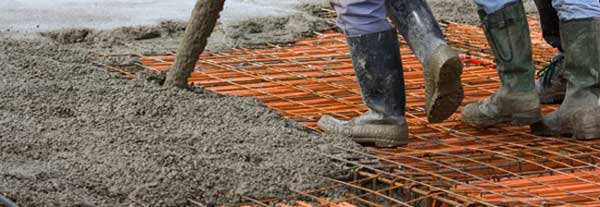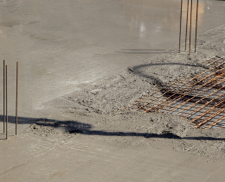When Not to Use a Concrete Moisture Meter
Successful concrete slab installation rests on two key pieces of knowledge regarding moisture: an understanding of concrete moisture content (MC), and the limitations of a concrete moisture meter. Builders and consumers must know that concrete floor moisture test methods produce MC readings for different purposes. The bottom line is that a moisture meter for concrete does not indicate overall concrete slab readiness.

Concrete Moisture Meter
A concrete moisture meter measures the concentration of moisture at the slab surface. This form of concrete floor moisture test is valuable in assisting contractors in identifying suspect areas that might require further testing, deeper in the slab, but that testing must be conducted with in situ probes.
Concrete slabs all have a moisture gradient: MC is higher at a lower depth than it is at the uncovered slab surface. Indeed, moisture content at the slab surface largely reflects the relative humidity in the slab’s environment (a room or building). So, installers may best use a concrete moisture meter as a qualitative assessment; that is, an indication of where to best place RH sensors that produce quantitative moisture content results.
 A concrete moisture meter test on a concrete slab does not provide MC evidence which accounts for the different building materials mixes and densities within the slab. Concrete is formed by mixing cement, water and aggregate; modern mixes produce more subtle blends of these materials which may include more or less water.
A concrete moisture meter test on a concrete slab does not provide MC evidence which accounts for the different building materials mixes and densities within the slab. Concrete is formed by mixing cement, water and aggregate; modern mixes produce more subtle blends of these materials which may include more or less water.
That, in turn, can influence the concrete slab’s drying time. Other components, such as rebar (metal bar reinforcements) can produce false moisture content readings on non-pin meters. The varying chemical and physical characteristics can skew “moisture” readings by creating electrical resistance variances within the slab. No metered concrete floor moisture test can detect that dynamic from a surface reading.
The Composite: Meters and Probes
How best to measure moisture content in concrete slabs? The answer: a combination of qualitative (surface) assessment and quantitative (internal) assessment.
The best concrete floor moisture test takes into account the relative humidity gradient in every concrete slab. Every concrete moisture meter provides qualitative information by which installers can then accurately conduct quantitative RH testing inside the slab. Based on the combined results, contractors can determine concrete slab readiness.
Increasingly, building materials manufacturers include relative humidity specifications in the installation guidelines for their products. This assists builders greatly to ensure that concrete floor moisture test results conform with the optimum conditions needed for floor covering success.